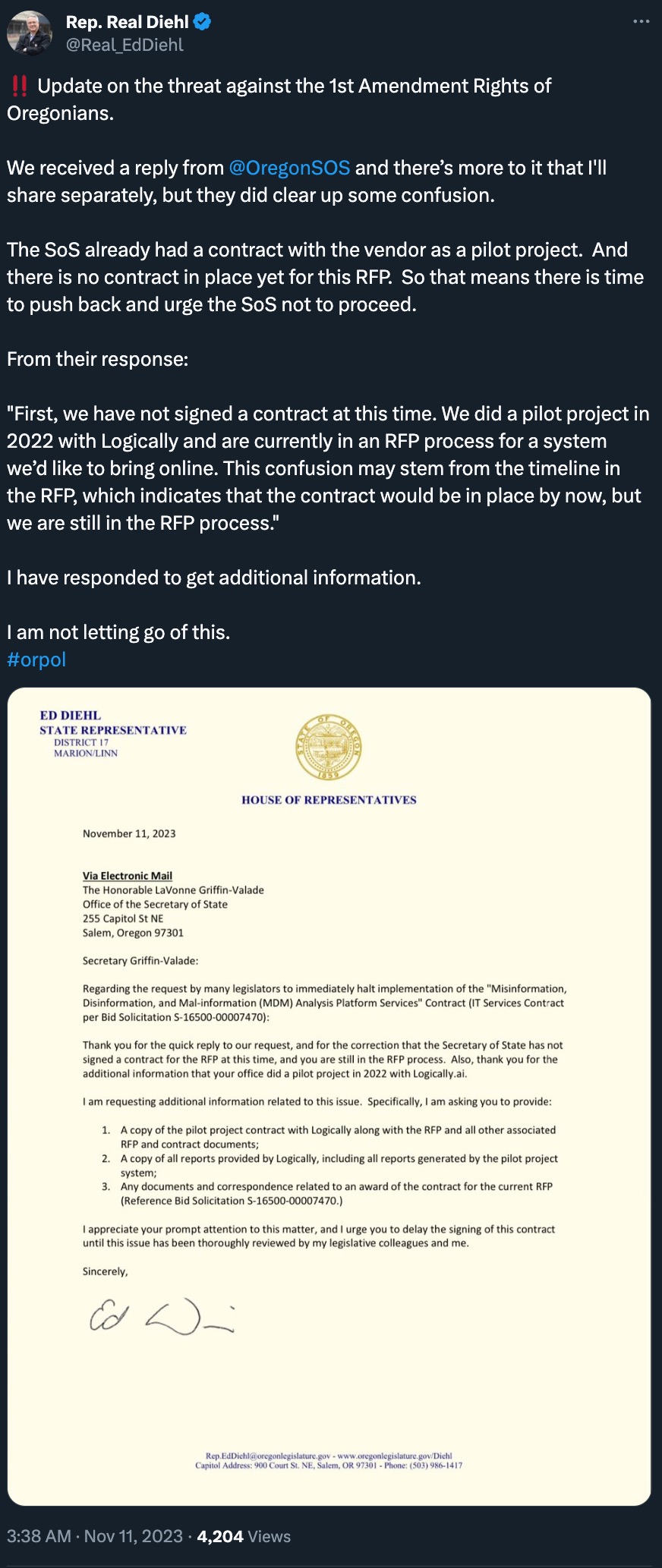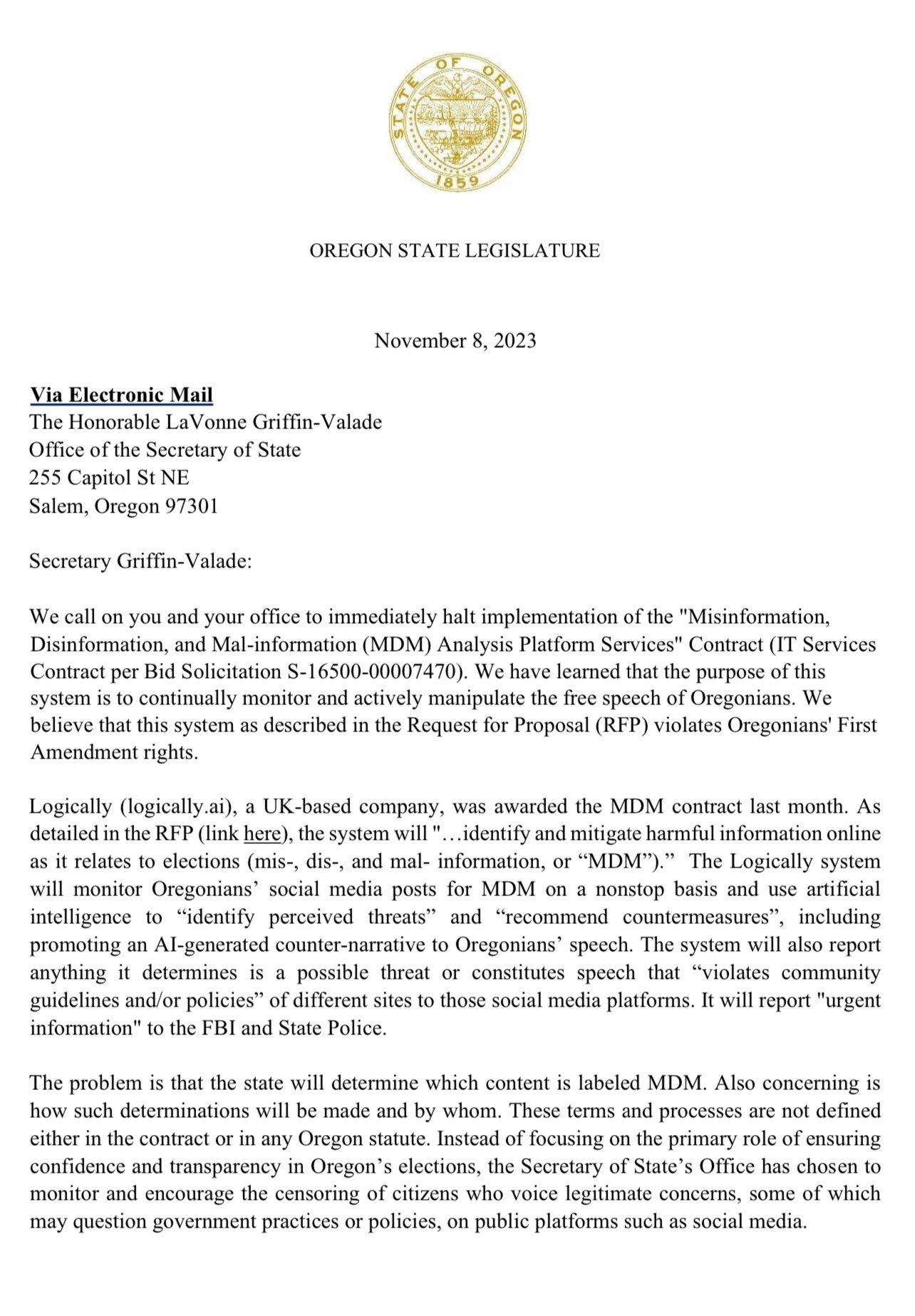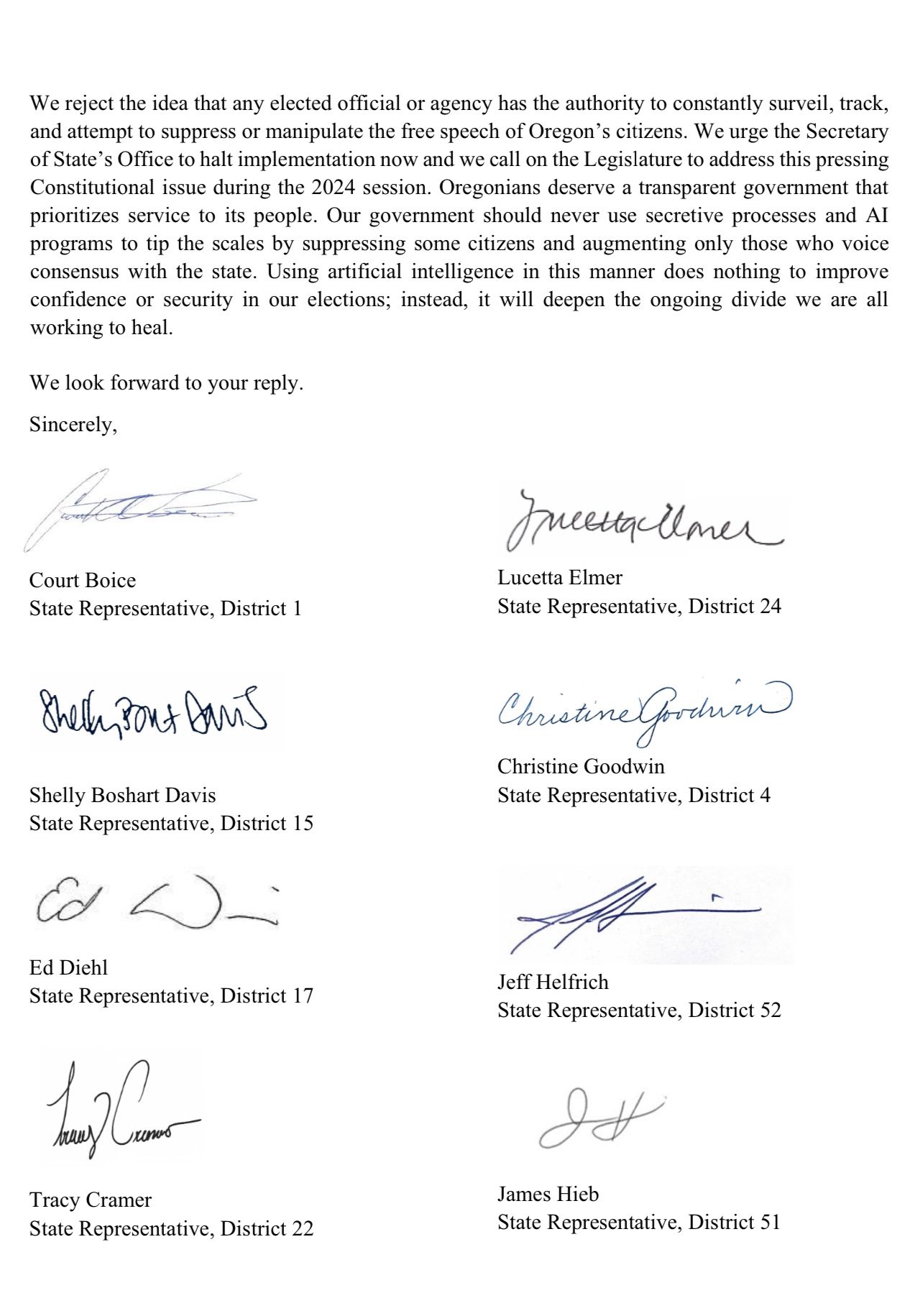A newly-planned initiative by the Secretary of State’s office in Oregon is rightfully under fire over concerns of potentially infringing on free speech. A faction of 27 Republican state legislators have raised allegations stating that the strategy, which aims at stemming the flow of election “misinformation,” could inhibit the freedom of expression amongst the citizens of Oregon.
These lawmakers, led by State Representative Ed Diehl, jointly addressed their protests through a letter to Secretary of State LaVonne Griffin-Valade. Rep. Diehl then took to social media on Wednesday to publicize the letter.

The GOP legislators assert that a contract was handed over to a UK-based firm, Logically, last month, a contract that permits the company to scan online conversations for potential threats. Furthermore, the project allegedly empowers an artificially intelligent system to categorize and tag what should be deemed as “misinformation.”
Laura Kerns from Griffin-Valade’s office confirms that a request for proposal (RFP) was indeed put forth and a company from the UK is among those in consideration. She adamantly points out, however, “We have not signed a contract at this time.”


The tech-enabled solution, Republicans insist, would subsequently provoke social media platforms into stifling their users. Kerns, however, paid the usual lip service that government agencies have paid to free speech, adding “The Secretary of State’s office has no authority, ability or desire to censor speech. We do have a very real need to protect the people and infrastructure that make our democracy work, and provide accurate information through official channels.”
Additionally, Kerns mentions the Secretary of State’s office seeks “A system to review websites, social media, and blogs to notify us of threats and misinformation in a manner similar to a Google news alert.”
In other words, Kerns claims they’re not censoring Americans, *only* surveilling the speech of Americans.
The perspective-goal system will only track publicly available content and use it as a means to accomplish two goals, “One: To identify credible threats to public safety that we will share with law enforcement. And two: To better understand how we can most effectively share accurate information with voters by seeing what information is circulating.”












